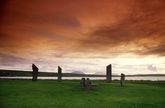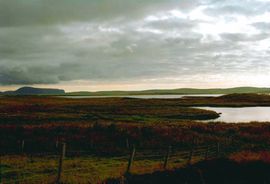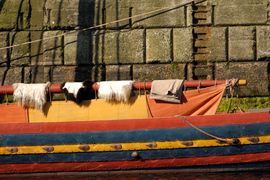Earldom of Orkney
Orkney, Shetland and Caithness comprised a Viking Earldom ruled from Orkney. Nowhere in Britain does the Viking influence shine through as strongly as here.
The majority of place-names on the islands are of Norse origin, bearing testimony to the profound Scandinavian influence, which began in the late 8th century when sporadic raids began and exiled regional leaders fled the emerging unified monarchy in Norway. To curb the piracy exerted by these exiled war-bands the Norwegian king allegedly took the islands and made them an earldom, which eventually grew strong enough to threaten Norway itself not to mention the surrounding Scottish territories. Norway regained control over Orkney, but in the 13th century its importance dwindled and it was, partly through kinship ties between its rulers and Scottish nobility, assimilated into Scotland, though Scandinavian influence continued into the 15th century.
Orkney was the seat of the earldom and when the murdered earl Magnus was canonised and his bones moved to the newly erected St. Magnus Cathedral Kirkwall became the Island's capital.
Fair Isle halfway between Orkney and Shetland is reported in the Orkneyinga saga to have had a beacon to warn Orkney of attacks from Shetland, but the island has not revealed any archaeological evidence of Viking settlement.
Shetland on the other hand is rich in Viking remains. While no written sources speak of Viking settlement or military activity on Shetland, the archaeological record as well as language and place names draw a picture of a rich Scandinavian legacy.
Fact: The earldom extended into the Scottish mainland with a 'bridgehead' on Caithness, where the few excavated settlements seem to indicate that Viking influence began in the 10th century.
Monica Callaghan, Hunterian Museum & Art Gallery, University of Glasgow.
Red. Louise Kæmpe Henriksen



